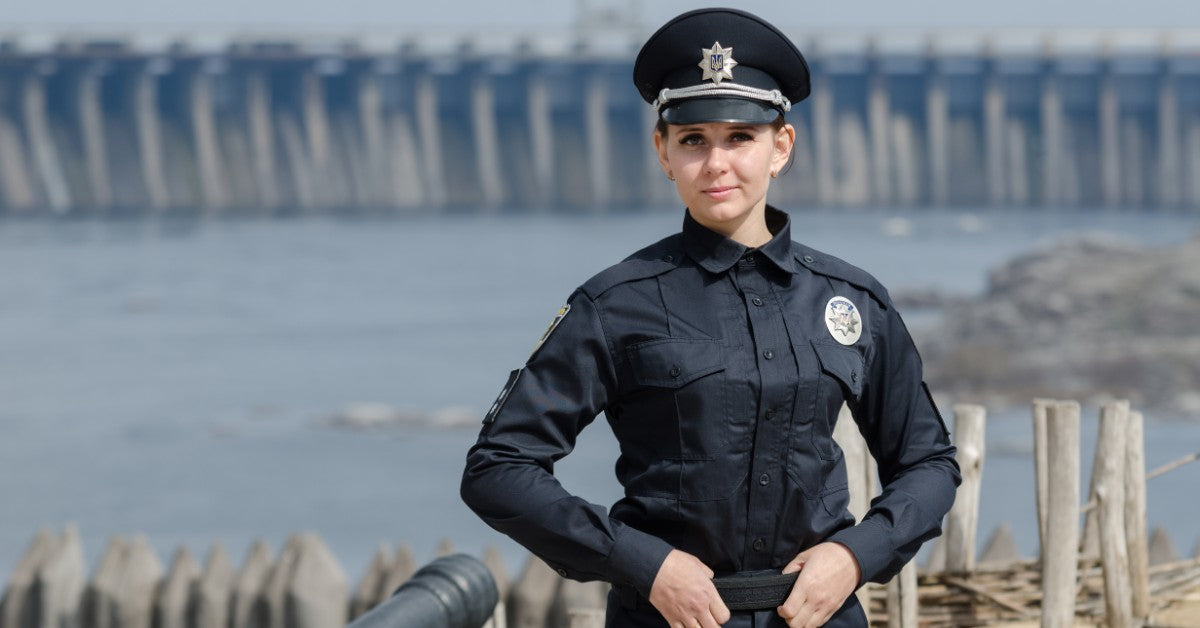
What Is a Police Duty Belt?
As a law enforcement officer, one of the most important parts of your uniform is your police duty belt. It carries your most important equipment whether it’s your firearm, flashlight, or baton, so that it is there when you need it.
In today’s blog post, we are going to discuss exactly what a police duty belt is, what equipment is commonly carried on a police duty belt, and how to choose which police duty belt you should purchase. Continue reading to learn more and when you are ready to shop high-quality police duty belts, shop our two-ply tactical belts and our three-ply duty belts at Klik Belts.
Don’t forget to inquire about our Public Safety Appreciation Discount for law enforcement officers, first responders, and military personnel.
What Is a Police Duty Belt?
A police duty belt, also commonly called a duty belt or gun belt, is worn by a police officer while on duty and is typically where the officer will carry all of their equipment. It provides the officer has quick, easy access to it. A police duty belt must be strong and rigid enough to support anywhere from 10 to 25 pounds of equipment.
A police duty belt can be made from nylon, leather, or another material, however, the most common type of police duty belt is constructed of nylon. Nylon belts are a bit more comfortable than leather belts and can come in varying strengths and widths.
What Equipment Is Carried on a Police Duty Belt?
Which equipment a law enforcement officer carries on their police duty belt depends upon their particular position and needs. Some may be required to carry an extensive amount of equipment while others, such as those wearing plain clothes, may choose to only conceal carry. In this blog, we’ve included a list of the most commonly carried equipment.
Firearm
The most common piece of equipment that a law enforcement officer wears on their police duty belt is their firearm. The firearm is usually carried on the right-hand side where it is easily and quickly accessible, of course, this is assuming that the individual is right-handed.
Radio
Another important piece of equipment for a law enforcement officer to carry at their waist is a radio. It’s extremely important that they have a way to contact others to report in or for help when needed. The radio is typically kept on the left side so that the law enforcement officer can use their radio with their left hand and still have their dominant hand free to reach for their firearm if necessary.
OC Spray
OC spray, better known as pepper spray, is also carried by many law enforcement officers on their police duty belt. It acts as an effective defense weapon for less serious situations that require a non-lethal option.
Baton
Many law enforcement officers also carry a collapsible baton on their police duty belt. This is usually carried on their right-hand side so that they can access it with their dominant hand.
Handcuffs
Handcuffs are essential for most law enforcement officers and are commonly carried on their police duty belt. Handcuffs are typically held in a place so that they are easily accessible with either hand.
Flashlight
A small flashlight is also often carried on an officer’s police duty belt. It’s typically a compact yet powerful flashlight so that it doesn’t add any unnecessary extra weight to their belt.
Taser
Not all law enforcement officers carry a taser on their police duty belt, but many do. It’s an ideal non-lethal weapon that can help officers subdue an assailant without terminally injuring them.
How Do I Choose a Police Duty Belt?
When choosing a police duty belt, there are several aspects that you’ll want to consider. You’ll want to ensure that your belt is strong enough to hold your equipment, yet comfortable enough to wear for long periods of time.
Strength
First and foremost, you’ll want to choose a belt that is strong and stiff enough to carry your equipment. Depending upon your position and your department standards, you may be required to carry a little or a lot of equipment. No matter how much equipment you’ll be carrying on your police duty belt, you’ll want to ensure that your belt will support the weight and be there for you when you need it. This means that you’ll want to choose a belt that is made from high-quality materials for both the webbing and the buckle.
Adjustable
The ideal police duty belt will be easily adjustable. When you are carrying heavy equipment at your waist, you don’t necessarily want a traditional prong belt buckle where you have to slip the prong through the hole. Instead, a belt that allows you to pull the end of the tail to tighten the belt is preferable because you can have the exact fit that you want.
Comfort
While strength is certainly the first thing that you look for in a police duty belt, it will also have to be decently comfortable. You don’t want a belt that digs into your sides or one that constantly slides down. You want a belt that is comfortable enough to wear for extended periods of time while you work long shifts. An ideal police duty belt will be just as comfortable while you are sitting in your patrol car as when you are walking a beat.


